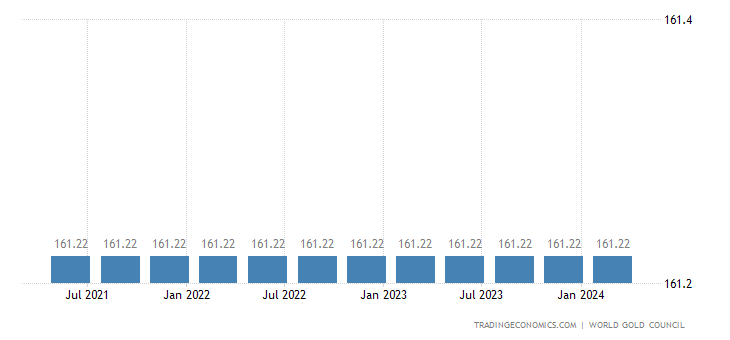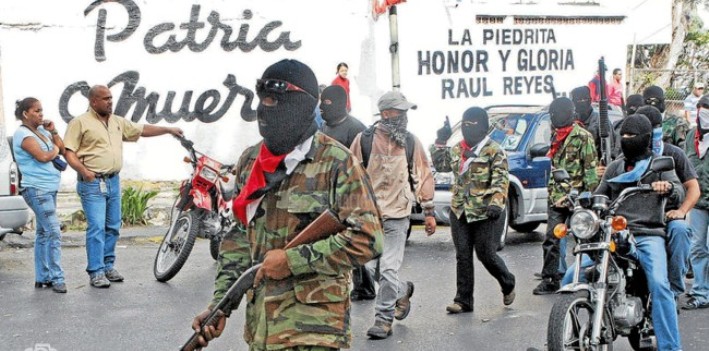
If government agencies are working this mission, shouldn’t Congress take up some measures too? Given this Executive Order, consider what motivated this action and consider all the measures you yourself should take.
By the authority vested in me as President by the Constitution and the laws of the United States of America, it is hereby ordered as follows:
Section 1. Purpose. An electromagnetic pulse (EMP) has the potential to disrupt, degrade, and damage technology and critical infrastructure systems. Human-made or naturally occurring EMPs can affect large geographic areas, disrupting elements critical to the Nation’s security and economic prosperity, and could adversely affect global commerce and stability. The Federal Government must foster sustainable, efficient, and cost-effective approaches to improving the Nation’s resilience to the effects of EMPs.
Sec. 2. Definitions. As used in this order:
(a) “Critical infrastructure” means systems and assets, whether physical or virtual, so vital to the United States that the incapacity or destruction of such systems and assets would have a debilitating impact on security, national economic security, national public health or safety, or any combination of those matters.
(b) “Electromagnetic pulse” is a burst of electromagnetic energy. EMPs have the potential to negatively affect technology systems on Earth and in space. A high-altitude EMP (HEMP) is a type of human-made EMP that occurs when a nuclear device is detonated at approximately 40 kilometers or more above the surface of Earth. A geomagnetic disturbance (GMD) is a type of natural EMP driven by a temporary disturbance of Earth’s magnetic field resulting from interactions with solar eruptions. Both HEMPs and GMDs can affect large geographic areas.
(c) “National Critical Functions” means the functions of government and the private sector so vital to the United States that their disruption, corruption, or dysfunction would have a debilitating effect on security, national economic security, national public health or safety, or any combination thereof.
(d) “National Essential Functions” means the overarching responsibilities of the Federal Government to lead and sustain the Nation before, during, and in the aftermath of a catastrophic emergency, such as an EMP that adversely affects the performance of Government.
(e) “Prepare” and “preparedness” mean the actions taken to plan, organize, equip, train, and exercise to build and sustain the capabilities necessary to prevent, protect against, mitigate the effects of, respond to, and recover from those threats that pose the greatest risk to the security of the Nation. These terms include the prediction and notification of impending EMPs.
(f) A “Sector-Specific Agency” (SSA) is the Federal department or agency that is responsible for providing institutional knowledge and specialized expertise as well as leading, facilitating, or supporting the security and resilience programs and associated activities of its designated critical infrastructure sector in the all-hazards environment. The SSAs are those identified in Presidential Policy Directive 21 of February 12, 2013 (Critical Infrastructure Security and Resilience).
Sec. 3. Policy. (a) It is the policy of the United States to prepare for the effects of EMPs through targeted approaches that coordinate whole-of-government activities and encourage private-sector engagement. The Federal Government must provide warning of an impending EMP; protect against, respond to, and recover from the effects of an EMP through public and private engagement, planning, and investment; and prevent adversarial events through deterrence, defense, and nuclear nonproliferation efforts. To achieve these goals, the Federal Government shall engage in risk-informed planning, prioritize research and development (R&D) to address the needs of critical infrastructure stakeholders, and, for adversarial threats, consult Intelligence Community assessments.
(b) To implement the actions directed in this order, the Federal Government shall promote collaboration and facilitate information sharing, including the sharing of threat and vulnerability assessments, among executive departments and agencies (agencies), the owners and operators of critical infrastructure, and other relevant stakeholders, as appropriate. The Federal Government shall also provide incentives, as appropriate, to private-sector partners to encourage innovation that strengthens critical infrastructure against the effects of EMPs through the development and implementation of best practices, regulations, and appropriate guidance.
Sec. 4. Coordination. (a) The Assistant to the President for National Security Affairs (APNSA), through National Security Council staff and in consultation with the Director of the Office of Science and Technology Policy (OSTP), shall coordinate the development and implementation of executive branch actions to assess, prioritize, and manage the risks of EMPs. The APNSA shall, on an annual basis, submit a report to the President summarizing progress on the implementation of this order, identifying gaps in capability, and recommending how to address those gaps.
(b) To further the Federal R&D necessary to prepare the Nation for the effects of EMPs, the Director of OSTP shall coordinate efforts of agencies through the National Science and Technology Council (NSTC). The Director of OSTP, through the NSTC, shall annually review and assess the R&D needs of agencies conducting preparedness activities for EMPs, consistent with this order.
Sec. 5. Roles and Responsibilities. (a) The Secretary of State shall:
(i) lead the coordination of diplomatic efforts with United States allies and international partners regarding enhancing resilience to the effects of EMPs; and
(ii) in coordination with the Secretary of Defense and the heads of other relevant agencies, strengthen nuclear nonproliferation and deterrence efforts, which would reduce the likelihood of an EMP attack on the United States or its allies and partners by limiting the availability of nuclear devices.
(b) The Secretary of Defense shall:
(i) in cooperation with the heads of relevant agencies and with United States allies, international partners, and private-sector entities as appropriate, improve and develop the ability to rapidly characterize, attribute, and provide warning of EMPs, including effects on space systems of interest to the United States;
(ii) provide timely operational observations, analyses, forecasts, and other products for naturally occurring EMPs to support the mission of the Department of Defense along with United States allies and international partners, including the provision of alerts and warnings for natural EMPs that may affect weapons systems, military operations, or the defense of the United States;
(iii) conduct R&D and testing to understand the effects of EMPs on Department of Defense systems and infrastructure, improve capabilities to model and simulate the environments and effects of EMPs, and develop technologies to protect Department of Defense systems and infrastructure from the effects of EMPs to ensure the successful execution of Department of Defense missions;
(iv) review and update existing EMP-related standards for Department of Defense systems and infrastructure, as appropriate;
(v) share technical expertise and data regarding EMPs and their potential effects with other agencies and with the private sector, as appropriate;
(vi) incorporate attacks that include EMPs as a factor in defense planning scenarios; and
(vii) defend the Nation from adversarial EMPs originating outside of the United States through defense and deterrence, consistent with the mission and national security policy of the Department of Defense.
(c) The Secretary of the Interior shall support the research, development, deployment, and operation of capabilities that enhance understanding of variations of Earth’s magnetic field associated with EMPs.
(d) The Secretary of Commerce shall:
(i) provide timely and accurate operational observations, analyses, forecasts, and other products for natural EMPs, exclusive of the responsibilities of the Secretary of Defense set forth in subsection (b)(ii) of this section; and
(ii) use the capabilities of the Department of Commerce, the private sector, academia, and nongovernmental organizations to continuously improve operational forecasting services and the development of standards for commercial EMP technology.
(e) The Secretary of Energy shall conduct early-stage R&D, develop pilot programs, and partner with other agencies and the private sector, as appropriate, to characterize sources of EMPs and their couplings to the electric power grid and its subcomponents, understand associated potential failure modes for the energy sector, and coordinate preparedness and mitigation measures with energy sector partners.
(f) The Secretary of Homeland Security shall:
(i) provide timely distribution of information on EMPs and credible associated threats to Federal, State, and local governments, critical infrastructure owners and operators, and other stakeholders;
(ii) in coordination with the heads of any relevant SSAs, use the results of risk assessments to better understand and enhance resilience to the effects of EMPs across all critical infrastructure sectors, including coordinating the identification of national critical functions and the prioritization of associated critical infrastructure at greatest risk to the effects of EMPs;
(iii) coordinate response to and recovery from the effects of EMPs on critical infrastructure, in coordination with the heads of appropriate SSAs;
(iv) incorporate events that include EMPs as a factor in preparedness scenarios and exercises;
(v) in coordination with the heads of relevant SSAs, conduct R&D to better understand and more effectively model the effects of EMPs on national critical functions and associated critical infrastructure — excluding Department of Defense systems and infrastructure — and develop technologies and guidelines to enhance these functions and better protect this infrastructure;
(vi) maintain survivable means to provide necessary emergency information to the public during and after EMPs; and
(vii) in coordination with the Secretaries of Defense and Energy, and informed by intelligence-based threat assessments, develop quadrennial risk assessments on EMPs, with the first risk assessment delivered within 1 year of the date of this order.
(g) The Director of National Intelligence shall:
(i) coordinate the collection, analysis, and promulgation, as appropriate, of intelligence-based assessments on adversaries’ capabilities to conduct an attack utilizing an EMP and the likelihood of such an attack; and
(ii) provide intelligence-based threat assessments to support the heads of relevant SSAs in the development of quadrennial risk assessments on EMPs.
(h) The heads of all SSAs, in coordination with the Secretary of Homeland Security, shall enhance and facilitate information sharing with private-sector counterparts, as appropriate, to enhance preparedness for the effects of EMPs, to identify and share vulnerabilities, and to work collaboratively to reduce vulnerabilities.
(i) The heads of all agencies that support National Essential Functions shall ensure that their allhazards preparedness planning sufficiently addresses EMPs, including through mitigation, response, and recovery, as directed by national preparedness policy.
Sec. 6. Implementation. (a) Identifying national critical functions and associated priority critical infrastructure at greatest risk.
(i) Within 90 days of the date of this order, the Secretary of Homeland Security, in coordination with the heads of SSAs and other agencies as appropriate, shall identify and list the national critical functions and associated priority critical infrastructure systems, networks, and assets, including space-based assets that, if disrupted, could reasonably result in catastrophic national or regional effects on public health or safety, economic security, or national security. The Secretary of Homeland Security shall update this list as necessary.
(ii) Within 1 year of the identification described in subsection (a)(i) of this section, the Secretary of Homeland Security, in coordination with the heads of other agencies as appropriate, shall, using appropriate government and private-sector standards for EMPs, assess which identified critical infrastructure systems, networks, and assets are most vulnerable to the effects of EMPs. The Secretary of Homeland Security shall provide this list to the President, through the APNSA. The Secretary of Homeland Security shall update this list using the results produced pursuant to subsection (b) of this section, and as necessary thereafter.
(b) Improving understanding of the effects of EMPs.
(i) Within 180 days of the identification described in subsection (a)(ii) of this section, the Secretary of Homeland Security, in coordination with the heads of SSAs and in consultation with the Director of OSTP and the heads of other appropriate agencies, shall review test data — identifying any gaps in such data — regarding the effects of EMPs on critical infrastructure systems, networks, and assets representative of those throughout the Nation.
(ii) Within 180 days of identifying the gaps in existing test data, as directed by subsection (b)(i) of this section, the Secretary of Homeland Security, in coordination with the heads of SSAs and in consultation with the Director of OSTP and the heads of other appropriate agencies, shall use the sector partnership structure identified in the National Infrastructure Protection Plan to develop an integrated cross-sector plan to address the identified gaps. The heads of agencies identified in the plan shall implement the plan in collaboration with the private sector, as appropriate.
(iii) Within 1 year of the date of this order, and as appropriate thereafter, the Secretary of Energy, in consultation with the heads of other agencies and the private sector, as appropriate, shall review existing standards for EMPs and develop or update, as necessary, quantitative benchmarks that sufficiently describe the physical characteristics of EMPs, including waveform and intensity, in a form that is useful to and can be shared with owners and operators of critical infrastructure.
(iv) Within 4 years of the date of this order, the Secretary of the Interior shall complete a magnetotelluric survey of the contiguous United States to help critical infrastructure owners and operators conduct EMP vulnerability assessments.
(c) Evaluating approaches to mitigate the effects of EMPs.
(i) Within 1 year of the date of this order, and every 2 years thereafter, the Secretary of Homeland Security, in coordination with the Secretaries of Defense and Energy, and in consultation with the Director of OSTP, the heads of other appropriate agencies, and private-sector partners as appropriate, shall submit to the President, through the APNSA, a report that analyzes the technology options available to improve the resilience of critical infrastructure to the effects of EMPs. The Secretaries of Defense, Energy, and Homeland Security shall also identify gaps in available technologies and opportunities for future technological developments to inform R&D activities.
(ii) Within 180 days of the completion of the activities directed by subsections (b)(iii) and (c)(i) of this section, the Secretary of Homeland Security, in coordination with the heads of other agencies and in consultation with the private sector as appropriate, shall develop and implement a pilot test to evaluate available engineering approaches for mitigating the effects of EMPs on the most vulnerable critical infrastructure systems, networks, and assets, as identified in subsection (a)(ii) of this section.
(iii) Within 1 year of the date of this order, the Secretary of Homeland Security, in coordination with the heads of relevant SSAs, and in consultation with appropriate regulatory and utility commissions and other stakeholders, shall identify regulatory and non regulatory mechanisms, including cost recovery measures, that can enhance private-sector engagement to address the effects of EMPs.
(d) Strengthening critical infrastructure to withstand the effects of EMPs.
(i) Within 90 days of completing the actions directed in subsection (c)(ii) of this section, the Secretary of Homeland Security, in coordination with the Secretaries of Defense and Energy and in consultation with the heads of other appropriate agencies and with the private sector as appropriate, shall develop a plan to mitigate the effects of EMPs on the vulnerable priority critical infrastructure systems, networks, and assets identified under subsection (a)(ii) of this section. The plan shall align with and build on actions identified in reports required by Executive Order 13800 of May 11, 2017 (Strengthening the Cybersecurity of Federal Networks and Critical Infrastructure). The Secretary of Homeland Security shall implement those elements of the plan that are consistent with Department of Homeland Security authorities and resources, and report to the APNSA regarding any additional authorities and resources needed to complete its implementation. The Secretary of Homeland Security, in coordination with the Secretaries of Defense and Energy, shall update the plan as necessary based on results from the actions directed in subsections (b) and (c) of this section.
(ii) Within 180 days of the completion of the actions identified in subsection (c)(i) of this section, the Secretary of Defense, in consultation with the Secretaries of Homeland Security and Energy, shall conduct a pilot test to evaluate engineering approaches used to harden a strategic military installation, including infrastructure that is critical to supporting that installation, against the effects of EMPs.
(iii) Within 180 days of completing the pilot test described in subsection (d)(ii) of this section, the Secretary of Defense shall report to the President, through the APNSA, regarding the cost and effectiveness of the evaluated approaches.
(e) Improving response to EMPs.
(i) Within 180 days of the date of this order, the Secretary of Homeland Security, through the Administrator of the Federal Emergency Management Agency, in coordination with the heads of appropriate SSAs, shall review and update Federal response plans, programs, and procedures to account for the effects of EMPs.
(ii) Within 180 days of the completion of actions directed by subsection (e)(i) of this section, agencies that support National Essential Functions shall update operational plans documenting their procedures and responsibilities to prepare for, protect against, and mitigate the effects of EMPs.
(iii) Within 180 days of identifying vulnerable priority critical infrastructure systems, networks, and assets as directed by subsection (a)(ii) of this section, the Secretary of Homeland Security, in consultation with the Secretaries of Defense and Commerce, and the Chairman of the Federal Communications Commission, shall provide the Deputy Assistant to the President for Homeland Security and Counterterrorism and the Director of OSTP with an assessment of the effects of EMPs on critical communications infrastructure, and recommend changes to operational plans to enhance national response and recovery efforts after an EMP.
Sec. 7. General Provisions. (a) Nothing in this order shall be construed to impair or otherwise affect:
(i) the authority granted by law to an executive department or agency, or the head thereof; or
(ii) the functions of the Director of the Office of Management and Budget relating to budgetary, administrative, or legislative proposals.
(b) This order shall be implemented consistent with applicable law and subject to the availability of appropriations.
(c) This order is not intended to, and does not, create any right or benefit, substantive or procedural, enforceable at law or in equity by any party against the United States, its departments, agencies, or entities, its officers, employees, or agents, or any other person.
DONALD J. TRUMP
THE WHITE HOUSE,
March 26, 2019.





 Analysts claim Uganda is a gold smuggling hub (Photo:
Analysts claim Uganda is a gold smuggling hub (Photo: 

